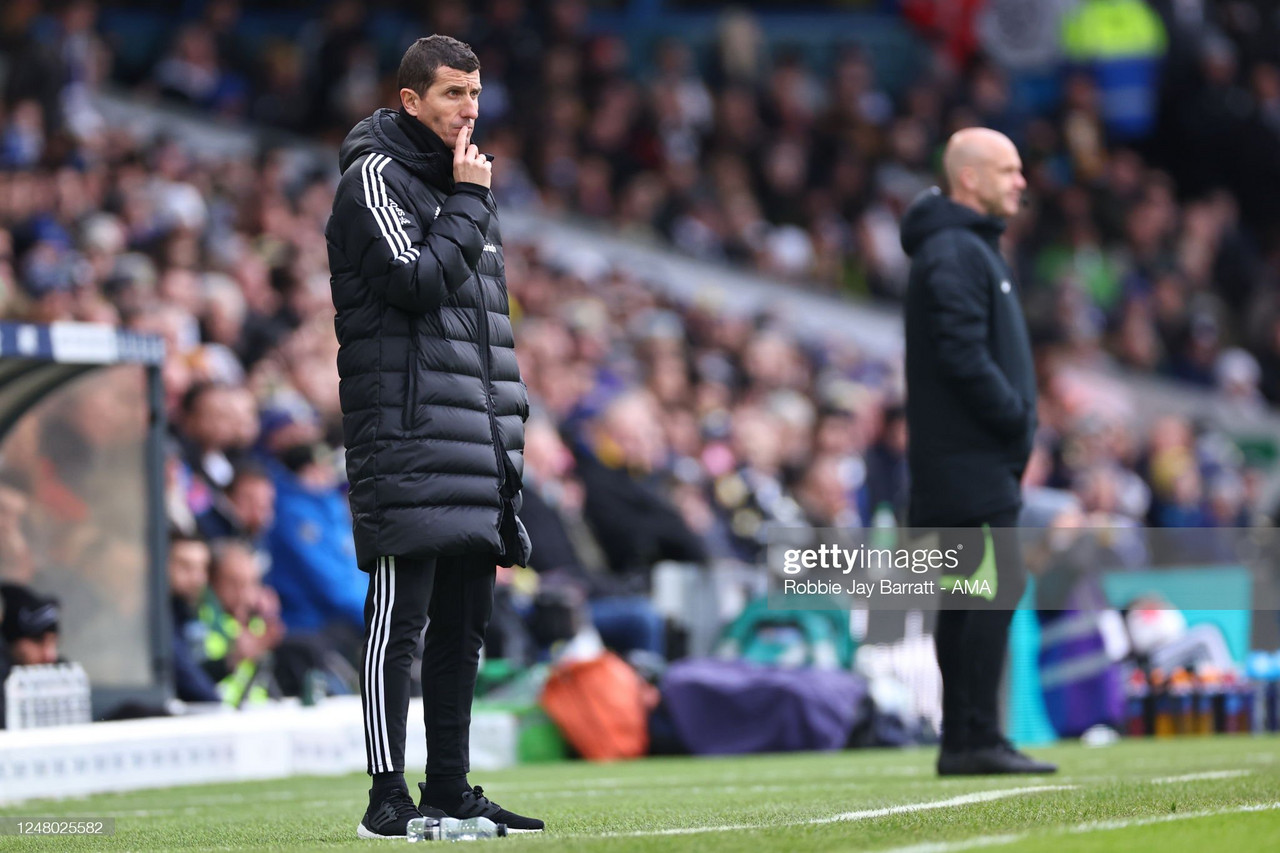After almost a month since the appointment of Javi Gracia, Leeds players have begun to adapt to his mellowing methods.
However, fans are struggling to grasp the new approach.
After becoming so accustomed to a high-pressing, front-foot style of play under Jesse Marsch, supporters around the ground bemoaned the reserved tactics deployed against Brighton last Saturday.
Though, for those who have seen Roberto De Zerbi’s Brighton side, it was evident that Gracia knew what he was doing. Pressing De Zerbi's men is often what they want you to do and is where a lot of their success comes from.
There was no necessity to try and win the ball back in areas where Brighton posed no threat, a concept almost completely contrary to messages instilled into the players by Marsch, and even Marcelo Bielsa.
As a result, when Brighton’s centre backs held the ball on the halfway line, many fans called for Patrick Bamford to press them.
On the few occasions he succumbed to the noise, Brighton passed it around him, took him out the game and launched attacks from there.
Outbursts from Brenden Aaronson, conflicting with managerial instruction, could see him dropped in Leeds’ next fixture against Wolves.
Additionally, stopping crosses was an issue against Brighton, as it has been all season.
With the club lacking a dominant defender who can organise his colleagues, high balls into the box have cost Leeds dearly this season.
Brighton’s first goal came from two opposition headers won in Leeds’ six-yard box – Kaoru Mitoma (5 foot 10), nodding it across to Alexis Mac Allister (5 foot 8).
This was an all too familiar example of poor defending in which Leeds paid a heavy price.
An indisputably good point against Brighton was marred by results elsewhere, but the Spaniard’s methods have proven to be somewhat effective so far.
Fans must duplicate his equanimity; he can navigate this team away from danger, but the tactics must come from him, not those in the stands.
Where are Leeds at tactically?
Leeds as a team are between different styles of play right now.
Despite the dialled down approach overall, their full backs are still being caught high up the pitch, meaning counter attacks coming down the flanks are harder to stop, especially with the new instructions given to wingers to drift infield more.
Marsch’s ill-disciplined behaviour on the touchline no doubt unsettled his players.
Fines, touchline bans, suspensions and antagonistic behaviour toward officials all contributed toward a chaotic tenure which never felt sustainable.
Chopping and changing:
The mid-season transition from this overzealousness to the tranquillity of Gracia reflects the lack of continuity from which Leeds have suffered for years.
Despite his lack of popularity among fans which, by the end was more than reasonable, the club backed him in the transfer market, only to sack him a month later.
Americans Tyler Adams, Weston Mckennie and Aaronson now find themselves at a crossroads in their careers.
At the core of Leeds' team, the three internationals are bound to have one eye on a home World Cup three years down the line.
Understandably, they will want to enter that tournament after a season of top-flight football.
After the departure of their fellow countryman in Marsch, the person who brought them to English football, it would be more than likely that the states-born midfield triad would follow suit in exiting Elland Road if Leeds were to be relegated.

A new manager is now left with a group of players who he will hope are not tattooed with careless principles and rash behaviours.
Premier League run-ins require cool heads and Leeds have appointed a man who is exactly that.
The issue is that Leeds are a hot-headed club.
The combination should make for a fascinating but nerve-jangling end to the season.










































